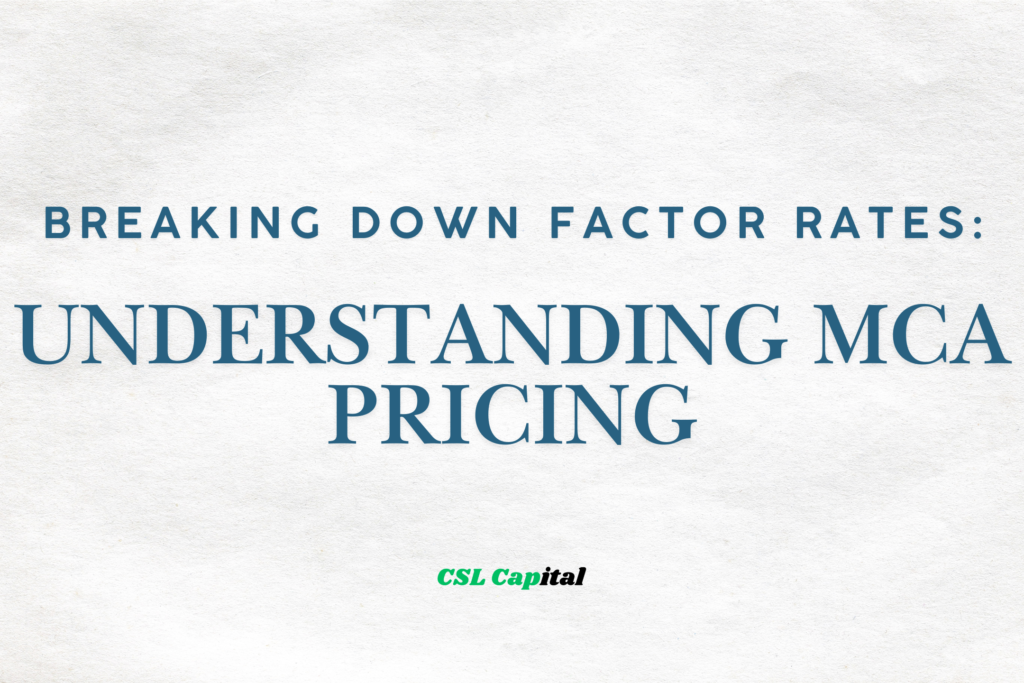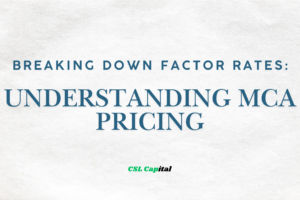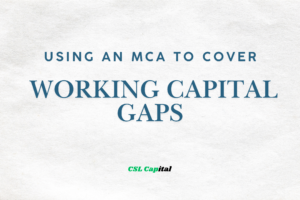In the fast-paced world of business financing, Merchant Cash Advances (MCAs) have become a popular choice for many small and medium-sized enterprises. However, one critical aspect that often confuses business owners is the factor rates associated with MCAs. Understanding MCA pricing is essential for making informed financial decisions and avoiding potential pitfalls. In this comprehensive guide, we will delve deep into Breaking Down Factor Rates: Understanding MCA Pricing to demystify this crucial aspect of business funding.
When it comes to obtaining quick and convenient funding for your business, Merchant Cash Advances offer a viable solution. However, the pricing structure of MCAs can be complex due to factor rates, which determine the total cost of borrowing. By breaking down factor rates and gaining a clear understanding of MCA pricing, business owners can make educated decisions that align with their financial goals.
Break Down Factor Rates if You Want to Understand MCA Pricing
Factor rates in the context of Merchant Cash Advances refer to the multiplier applied to the advance amount to determine the total repayment amount. Unlike traditional interest rates, factor rates are expressed as decimals rather than percentages. For example, a factor rate of 1.3 means that for every $1 borrowed, you will need to repay $1.30.
Factor rates play a significant role in determining the overall cost of borrowing through an MCA. It is crucial to understand how factor rates are calculated and the impact they have on your repayment obligations. Let’s explore some key factors related to MCA pricing:
- Calculation of Factor Rates: Factor rates are calculated based on various elements such as the term length of the advance, the total repayment amount, and the factor rate itself. By multiplying the factor rate with the advance amount, you can determine the total repayment obligation.
- Impact on Total Repayment: Higher factor rates result in a higher total repayment amount. While MCAs offer fast access to funds, the trade-off is often a higher cost of borrowing compared to traditional loans.
- Transparency in Pricing: Understanding the factor rate is essential for evaluating the true cost of an MCA. Be sure to review all terms and conditions carefully to avoid any surprises down the line.
- Comparison with Interest Rates: Unlike loans that have fixed interest rates, MCAs with factor rates can be more costly over time, especially for businesses with extended repayment terms.
- Negotiating Factor Rates: In some cases, business owners may have room to negotiate factor rates with MCA providers. It is advisable to explore different options and seek competitive rates that align with your budget.
- Early Repayment Considerations: Before opting for an MCA, consider how early repayments may impact the total cost. Some providers offer discounts for early payoffs, so be sure to inquire about such options.
FAQs about Breaking Down Factor Rates: Understanding MCA Pricing
What factors influence the determination of factor rates?
Factor rates are influenced by various factors such as the business’s creditworthiness, industry risk, and the provider’s underwriting criteria.
Are factor rates negotiable?
While some providers may offer flexibility in setting factor rates, it ultimately depends on individual agreements and market conditions.
How does a business calculate the total repayment amount using a factor rate?
To calculate the total repayment amount, simply multiply the factor rate by the advance amount. For instance, a factor rate of 1.4 on a $10,000 advance would result in a total repayment of $14,000.
Can businesses refinance MCAs with high factor rates?
Refinancing MCAs with high factor rates may be challenging due to existing repayment obligations. It is advisable to carefully assess the terms before committing to an MCA.
What are some alternatives to MCAs for businesses seeking funding?
Businesses exploring funding options can consider alternatives such as traditional term loans, lines of credit, or Small Business Administration (SBA) loans for more favorable terms and rates.
How can businesses mitigate the impact of high factor rates on cash flow?
To manage cash flow effectively with high factor rates, businesses can focus on increasing revenue streams, optimizing operational efficiency, and negotiating favorable repayment terms with MCA providers.
Conclusion
In conclusion, Breaking Down Factor Rates: Understanding MCA Pricing is paramount for business owners looking to navigate the complexities of MCA financing. By grasping the intricacies of factor rates, calculating total repayment amounts, and evaluating the true cost of borrowing, businesses can make informed decisions that support their financial objectives. Remember to conduct thorough research, compare options, and engage with reputable MCA providers to secure funding solutions that align with your business’s needs and budget.




